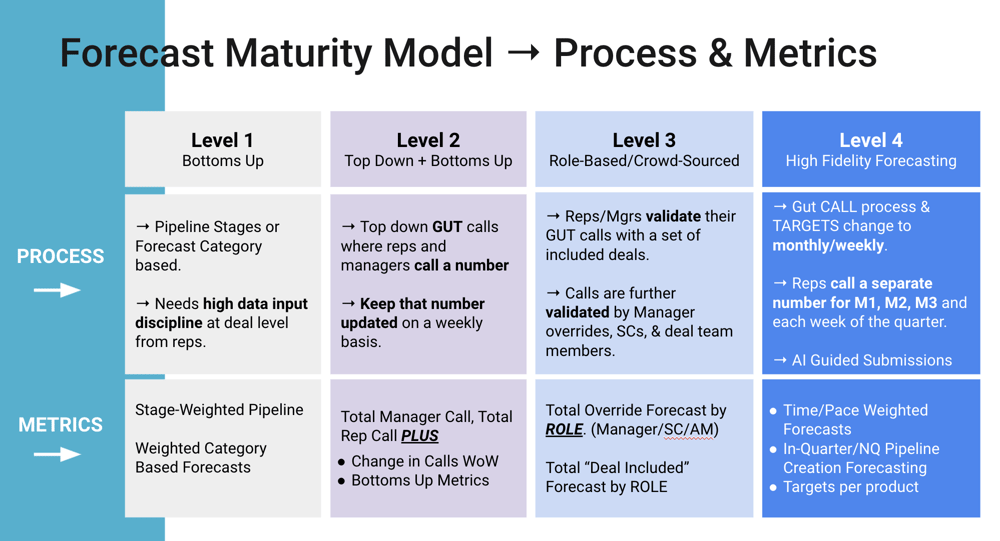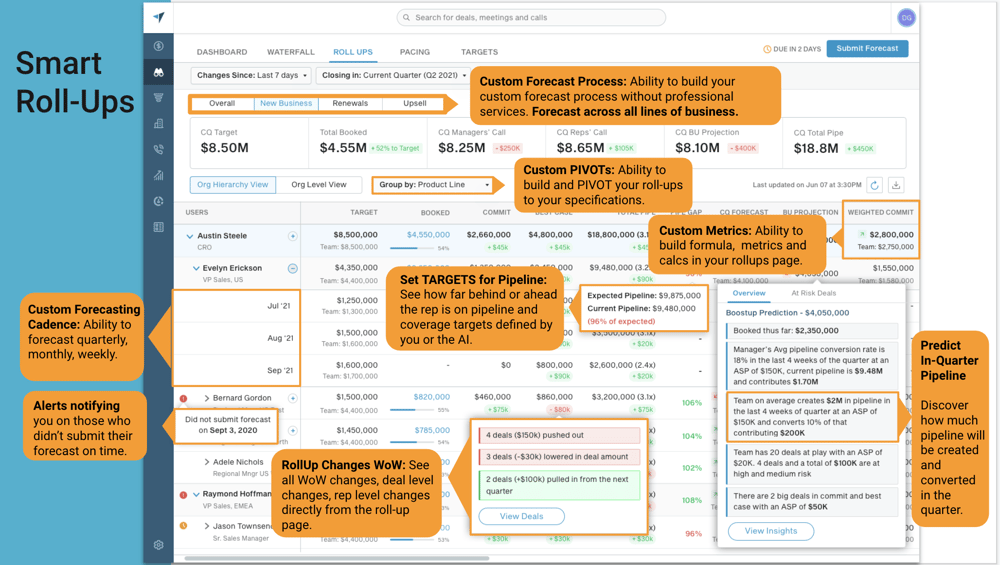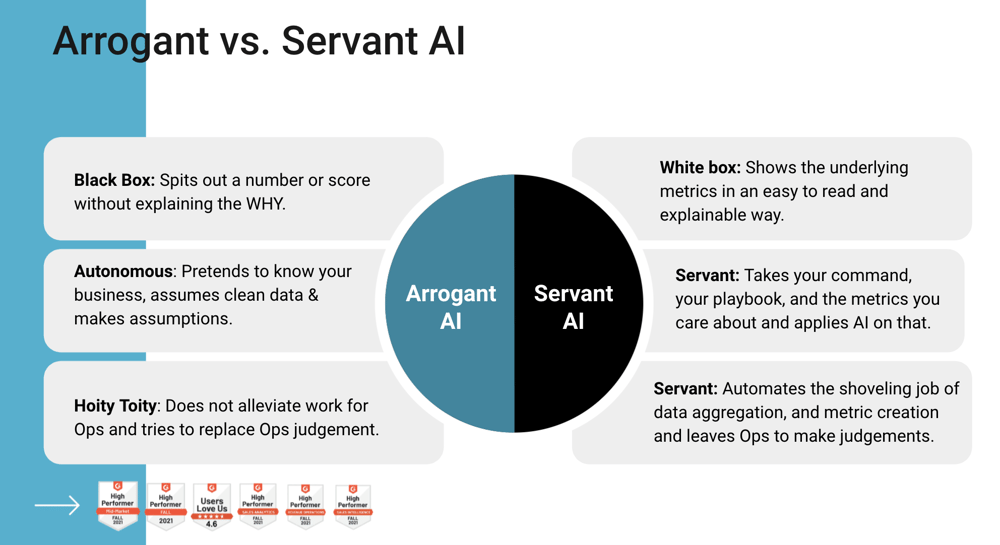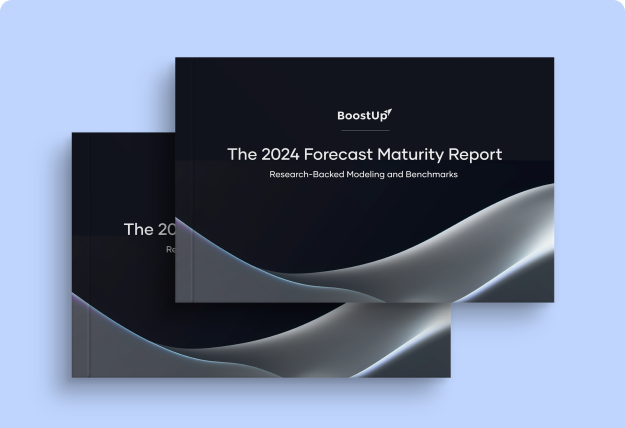The Revenue Blog /
Forecasting Platform Evaluation: Why Flexibility & Customization is Key
Forecasting Platform Evaluation: Why Flexibility & Customization is Key

Topics covered in this article
Welcome to part three of our seven-part series examining BoostUp and its place within the forecast and forecast intelligence platform market.
Part one was a brief history of the segment, and how incumbents like Aviso and Clari established themselves. You can read that here.
Part two covers how BoostUp is fulfilling the needs of modern revenue organizations that have been frustrated with outgoing solutions. Read it here.
In the next several posts, we will cover how BoostUp differs from Aviso and Clari in several tangible and intangible areas. These key areas make BoostUp a better offering and deliver more value to its users. They are:
- Platform flexibility
- Mutually beneficial partnerships that truly work
- Flat fees and agreements that help you grow
- Adoption and usability for every level and every role
- ROI through productivity
- Velocity of innovation
Change is the only Constant: The Need for Platform Flexibility
Change is the only constant in the world of Revenue Operations as they continually respond to macro and micro changes within their business.
- Companies acquire companies and end with multiple CRM instances
- Launch more products --> and need to forecast by each product line with specific targets for each product line
- Expand business models --> from SMB to Enterprise or vice versa -- need new forecast calling processes or mathematical models
- Expand forecasting to new roles --> such as customer success and solution consulting
- Expand from new business forecasting --> to renewal, up-sell and usage forecasting
BoostUp's advantage as a second entrant into the industry is a view of what has been done before. To remedy many of the issues users were currently experiencing, BoostUp created a change-friendly architecture that can match any business motion, role-based forecasting, or any forecasting cadence.
Incumbent platforms were designed in 2015 and have rigid architectures that need expensive and time-consuming professional services to make changes.
“BoostUp is very customizable and easy to use. You can forecast the way you want. I implemented a RevOps incumbent at my last two companies and am now giving BoostUp a try as we found them to miss some key needs year after year.”
Marlene Levy, Director of Revenue Operations | Udemy
The flexibility provided by BoostUp allows you to use your own forecast process, report on the metrics that matter, and improve your performance.
1. Process Flexibility
BoostUp supports all levels of maturity models from simple opportunity-based roll-ups to highly complex top-down calling with manager overrides, deal includes/excludes with monthly/weekly cadence, and specific targets for each product line.
BoostUp supports all 4 levels of forecasting from the most basic to the most advanced.

2. Roll Up Flexibility
BoostUp provides a highly customizable roll-ups page that brings together all the metrics a team can use to triangulate a forecast, including:
- Total/monthly pacing weighted, manager call, total rep call
- Total/monthly pacing weighted, Total manager override call
- Total/monthly pacing weighted, deal-include roll-up
- Total/monthly pacing weighted, deal-include - Agreed by all, agreed by SC, or agreed by CS
- Deal risk score-adjusted commits and best cases
- In-quarter pipeline creation, conversion
BoostUp can also handle any CRM data model with ease. For example:
- Deal data in Custom Objects
- Logic based definition of closed-won, pipeline stages
- Any number of forecast categories, pipeline stages
- Any number of business types
- Formula based columns (weighted commit etc.)
- Forecast categories and stages split across custom objects
- Multi-SFDC support, aggregate data and/or processes from multiple instances
- Support both run-rate forecasting AI and enterprise top-down natively in-platform

3. Data Flexibility (Custom Object Support)
Whether you are forecasting off of opportunity object, lead object, or any custom object, whether you have standard Salesforce fields or logic-based definitions of closed-won, amount fields, and so on, BoostUp can support any data type and model to meet your forecasting needs.
4. AI Flexibility
How exactly does BoostUp's AI model work?
Our model performs a statistical triangulation from 3 sources -
- Historical conversion data
- For each cohort of {Rep, deal size, stage, category, week(n))
- New pipeline creation and conversion (Rep, week(n))
- Deal by deal - Slip risk scoring
- Lack of Engagement, lack of documents, lack of meetings, lack of enough contacts, etc.
- Rep behavior
- Deals pushed/pulled, deals lowered in amount
- Accuracy behavior profile of each rep
Why is BoostUp AI more accurate and different than Aviso/Clari?
Aviso/Clari (REP based) --> predict from what the REP is doing
BoostUp (BUYER based) --> predicts from the what the BUYER is doing and NOT doing.
- BoostUp's model uses the MOST RELIABLE source of the signal - CURRENT PIPELINE QUALITY and heavily weights deal-by-deal slip risk scoring.
- Historical models work well - when there is a lot of good consistent past data - and the business variations are stable.
- Rep behavior models are least reliable - as rep behaviors are very different and often the signal is a lagging indicator.
What further separates BoostUp from Aviso/Clari?
- Opportunity level Matching - BU’s template detection AI technology --> matches right contacts, emails, activity with right opportunities with 95+% accuracy.
- Roll up from Current Pipeline RISK is the most RELIABLE source of overall AI predictions.
- Opportunity RISK AI is reliant on accurate activity data matching at the opportunity matching
What else differentiates BoostUp’s AI from Clari/Aviso?
- Explainable AI: BoostUp shows and shares the data and inferences behind why a prediction is made.
- Collaborative AI: Sales Data scientists can export all the data underlying the model and run their own experiments. Sales Data scientists can commission specific experiments with our partner team. For e.g.you can study the impact of MEDDICC on slip probability and overall projections.
- Agnostic AI: BoostUp can pull any field/metric from any data warehouse. For e.g. “Plan” from financial databases - and predict off of that.

When it comes to a forecasting solution, you must choose the platform that fits your needs, not the one that forces you to change your process.
In a direct comparison between Clari and BoostUp, a large company found that:
“The BoostUp platform is more robust… they blow away Clari on features.”
They also said that “BoostUp’s platform is very flexible and can be adapted to exactly our needs, were as Clari’s is very rigid.”
BoostUp’s approach to partnerships focuses on building true ROI and generating true positive impact for every use
BoostUp's Platform is Most Customizable & Flexible
.png?width=1000&name=Copy%20of%20Insight%20Driven%20Selling%20On-Demand%20(6).png)
With a few clicks, enable any forecasting metrics and customize your roll-ups page to reflect exactly what you and your team need to see. Read the levels of forecasting BoostUp can support.
Next, we will examine the co-innovation and partnership approach that BoostUp takes as it partners deeply with customers.




-Photoroom.png)